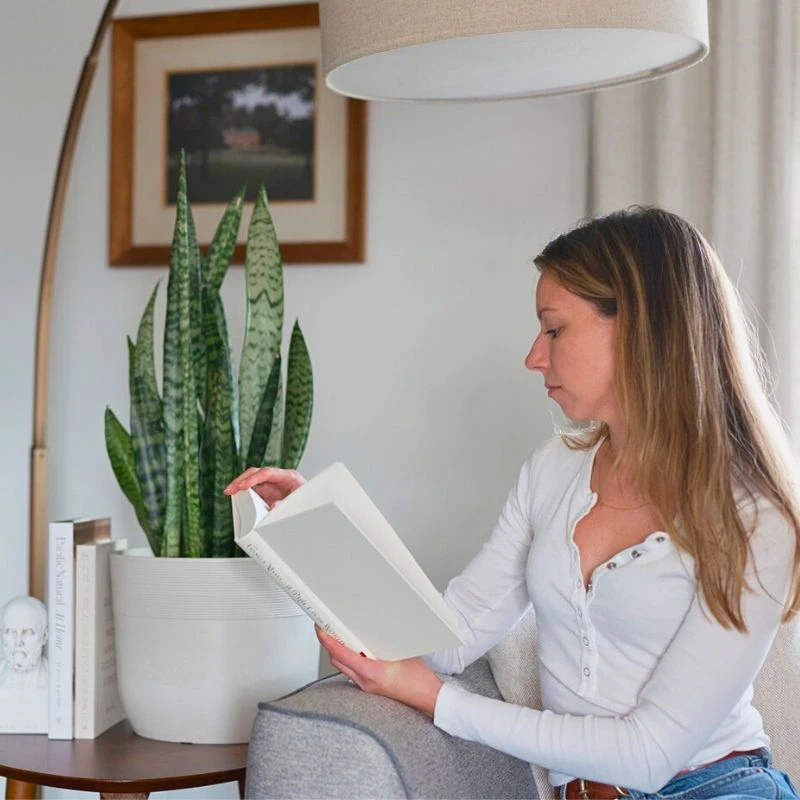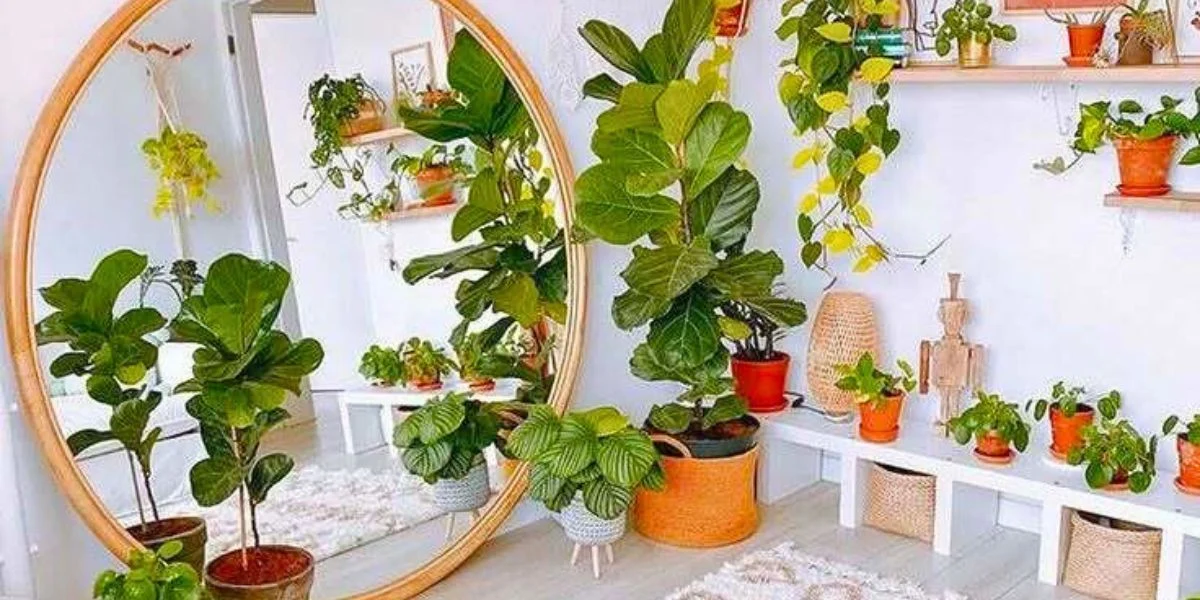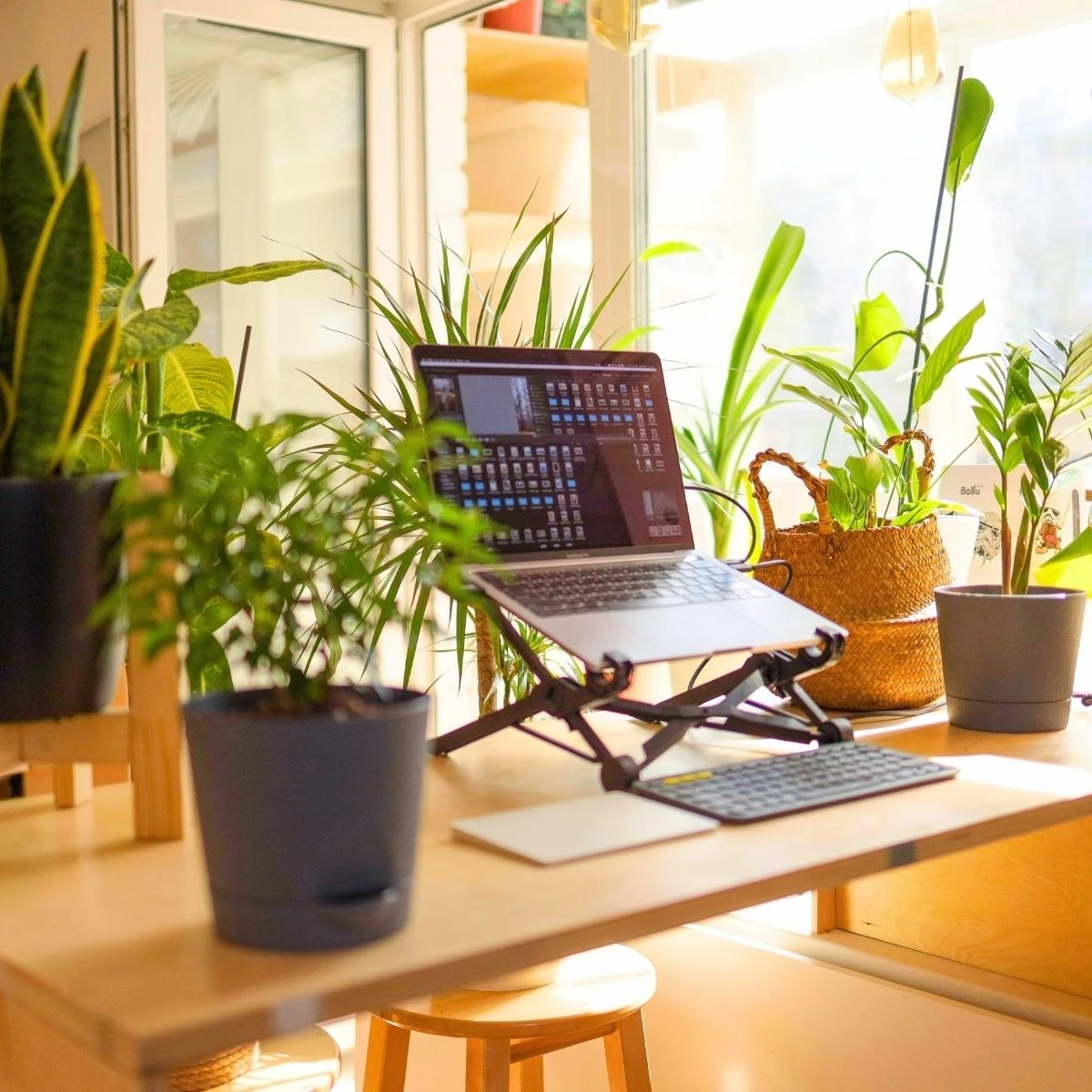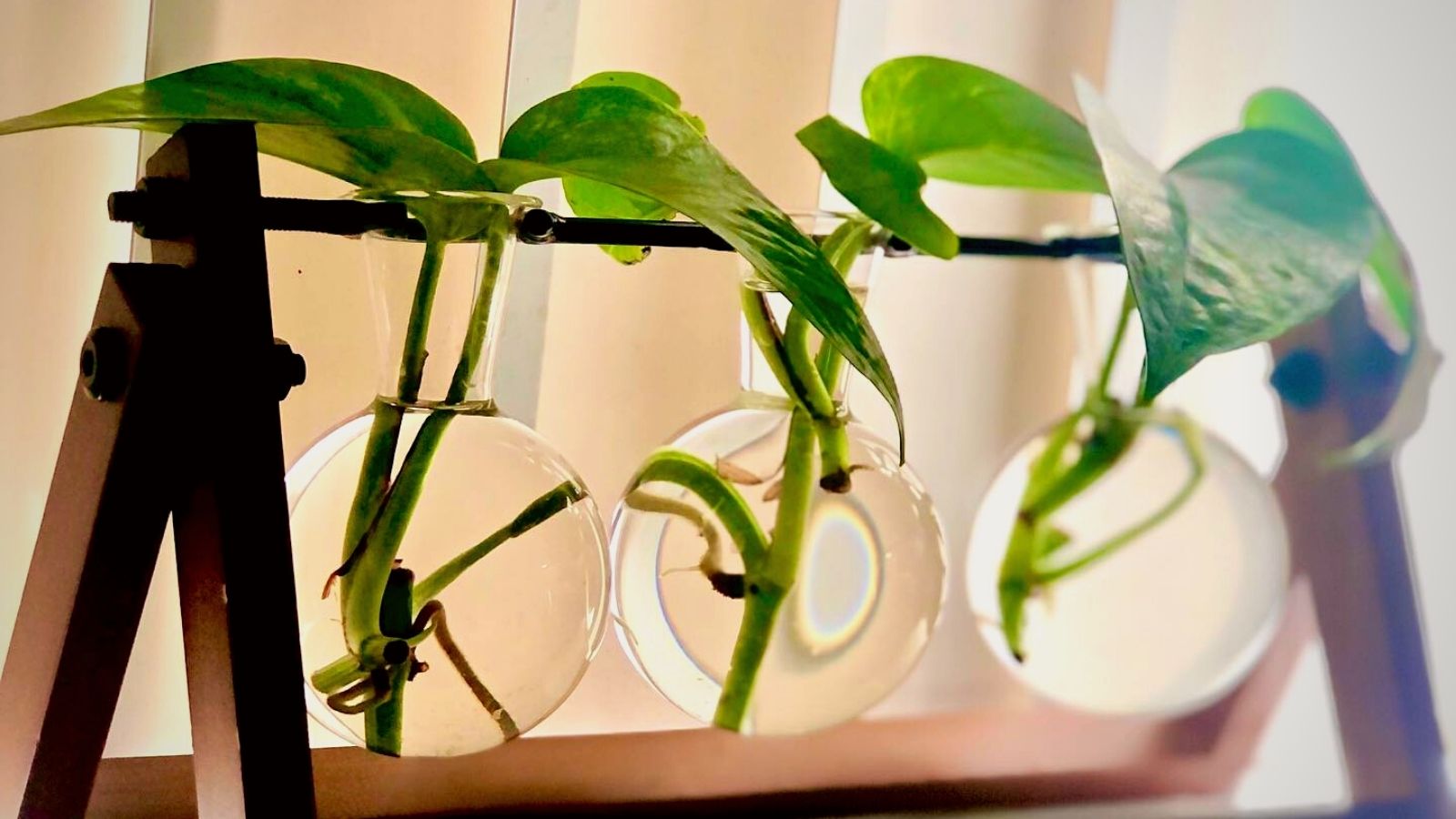Whether you are a new or seasoned plant parent, it is often prudent to go for plants with fewer maintenance demands. These plants ought to grow optimally indoors with minimal exposure to sunlight, infrequent watering intervals, and tolerance to indoor temperature and humidity conditions.
Chinese Evergreen, also known as the Aglaonema, is the perfect houseplant, available in different colors ranging from green, pink, red, gold, and silver. Chinese Evergreen is among other houseplants, capable of thriving with less or no exposure to direct sunlight.
With its lush and variegated leaves and air-purifying qualities, Aglaonema will be the focal point of your indoor plant portfolio. Chinese Evergreen can be so forgiving, especially to overly neglectful or forgetful parents, but with the following growing and caring guide, you will ultimately tend to your Chinese Evergreen plant effectively.
Chinese Evergreen Varieties
There are different varieties of the Aglaonema Commutatum to choose from. The growing and caring for each variety differ significantly. Based on your plant goals, choose a variety that fits your growing and caring preferences without any significant detriment to the plant. The following are some of the Chinese Evergreen Plant varieties currently available in the market.

Please note the colors, patterns, and shapes that contribute to the differences between each Aglaonema variety mentioned below.
Aglaonema Silver Bay
Chinese Evergreen Silver Bay has silver-colored foliage with dark green margins; this variety is best known for its air-purifying value, making it an ideal option for a plant parent keen on purifying the indoor air. Unlike the emerald green Aglaonema Chinese Evergreen, the Silver Bay requires sufficient access to light, so placing it in a strategic window is crucial.

Aglaonema Red Siam
Aglaonema Red Siam features leaves with a mix of red and green tones, creating a perfect contrast for your indoor space. To achieve the perfect mix of red and green, exposure to indirect light throughout the day is vital.
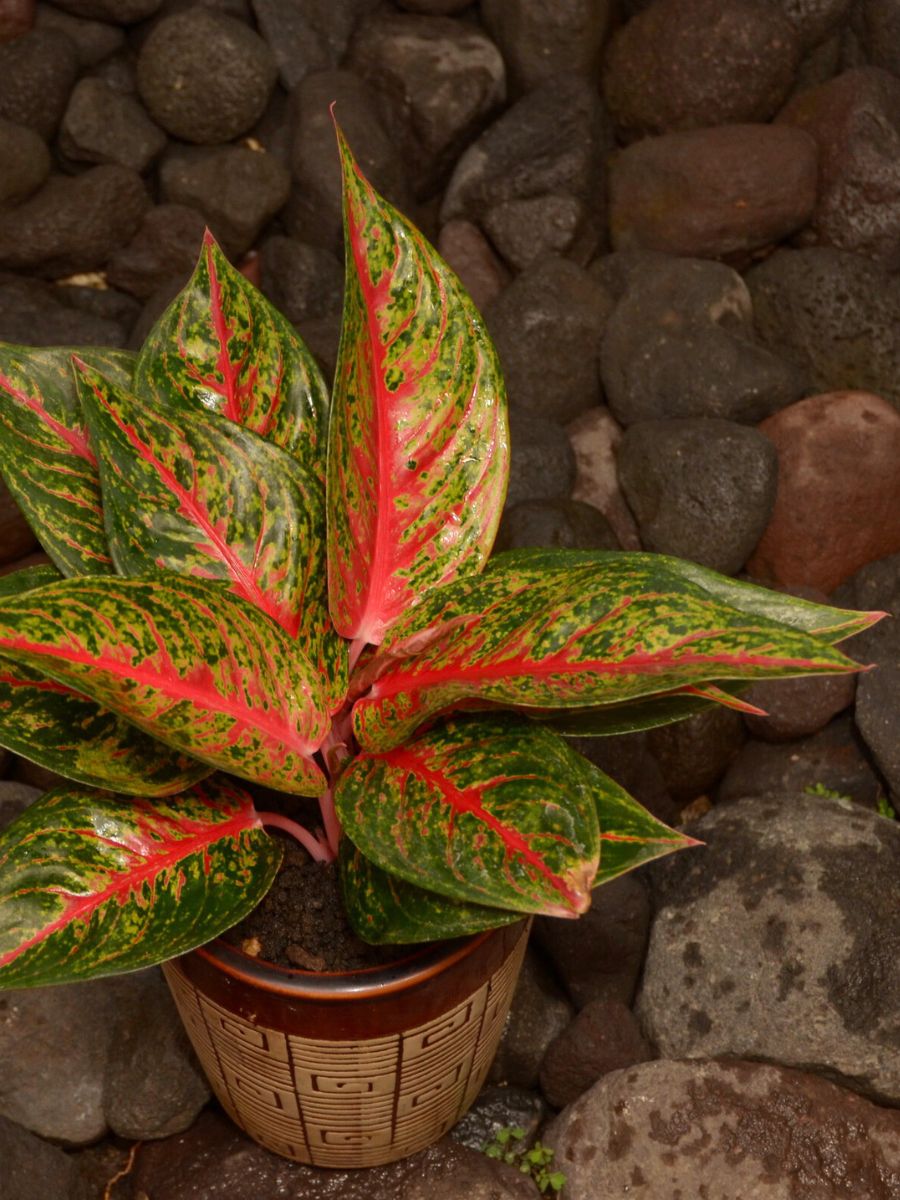
Aglaonema Emerald Beauty
Boasting its dark green foliage with silver or white variegation makes it an elegant choice to green up your indoor space. Chinese Evergreen Emerald beauty is a bit forgiving when it comes to the amount of light needed throughout the day, compared to other colorful options, with high light access demands.

Aglaonema Romeo
Aglaonema Romeo has a mix of red and pink shades, making it a better Chinese Evergreen plant for those seeking to make a bold statement through their indoor plant choices.
.jpg?1691597246131)
Aglaonema Golden Bay
Aglaonema Golden Bay has dark green foliage with recognizable patches of golden-yellow, which adds a warm yet inviting character to your indoor space.
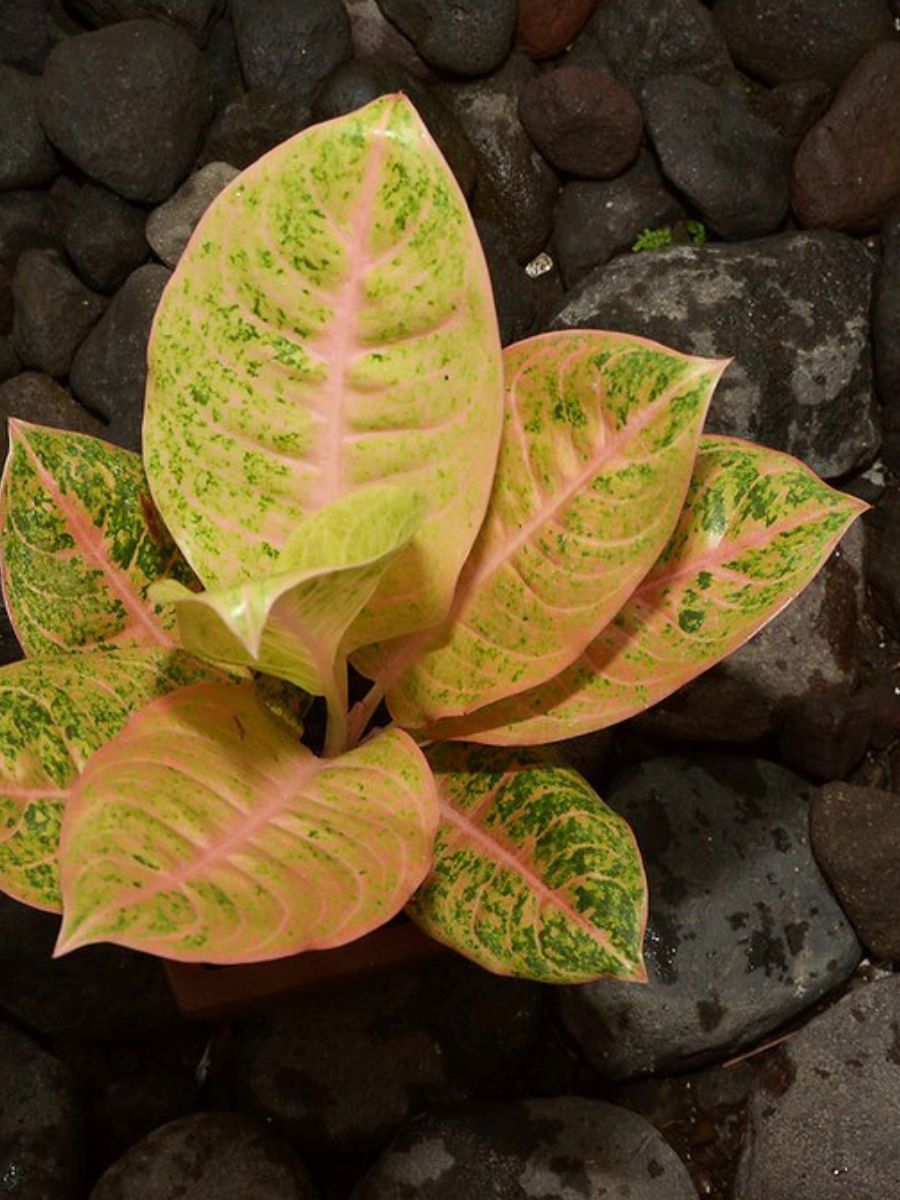
Aglaonema Growing and Caring Tips
Identification of a befitting Chinese Evergreen plant with the right variegation and free from pests and diseases is a good place to start your growing and caring journey. Ideally, go for a variety that complements your interior design strategy and aesthetic goals in general but not forgetting the lighting conditions of your indoor space.
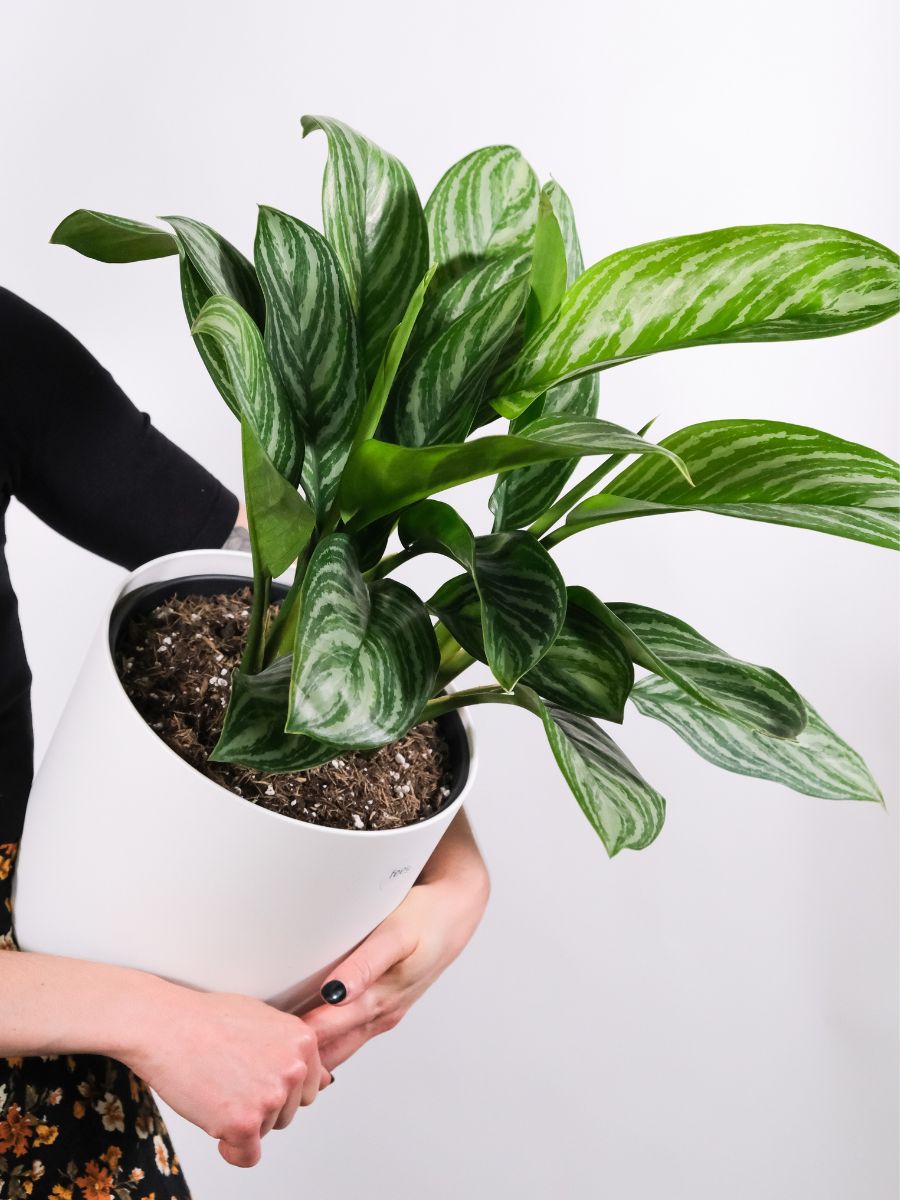
The following conditions are necessary to grow and care for the Chinese Evergreen successfully!
Start With the Right Size of the Container
Repotting of the Chinese Evergreen can be done once every two to three years during the growing season. Therefore, starting your Aglaonema growing journey with the right size of the container is vital to support the anticipated growth for the 2-3 year period. Getting a larger pot for your small aglaonema plant requires lots of soil to fill it up. A bigger container, with lots of soil, takes time to dry out, leading to sogginess, which might harm the plant in the long run.
Consider a pot that is one size larger than the nursery pot the plant comes with; this should accommodate the growing speed of your Chinese Evergreen plant before the next repotting season.
Use a Well-draining Soil
Chinese Evergreen prefers to stay on the drier side; thus, a well-draining potting mix is important in enhancing its growth and well-being. Adding some holes in your container can enhance soil drainage and prevent waterlogging and eventual plant root rot.
Watering Frequency
Chinese Evergreen is among the houseplants that require minimal watering; they are not excessively thirsty most of the time. Watering the Chinese Evergreen once a week and waiting for the topsoil to dry out before watering next should suffice. Consistent watering can lead to soggy soil and subsequently hinder the growth of your Aglanoema plant.
During the winter season, watering should be reduced drastically to once a month, since the plant often enters a dormancy period. The best indoor plants have less demanding watering intervals, and this should always be a priority when considering plants to add a touch of greenery and nature to your indoor space.
Optimal Light Exposure
Light contributes immensely to the growth of your Chinese Evergreen plant, most importantly,y the colored varieties like the Aglaonema Golden Bay, Silver Bay, or Red Siam, require sufficient access to indirect light throughout the day to achieve the desired tone variegation.
Please note that direct and hot sunlight can easily burn your plant, so avoid exposing your plant to direct sunlight by placing it near the south window, where there is unlimited access to indirect sunlight during the day.
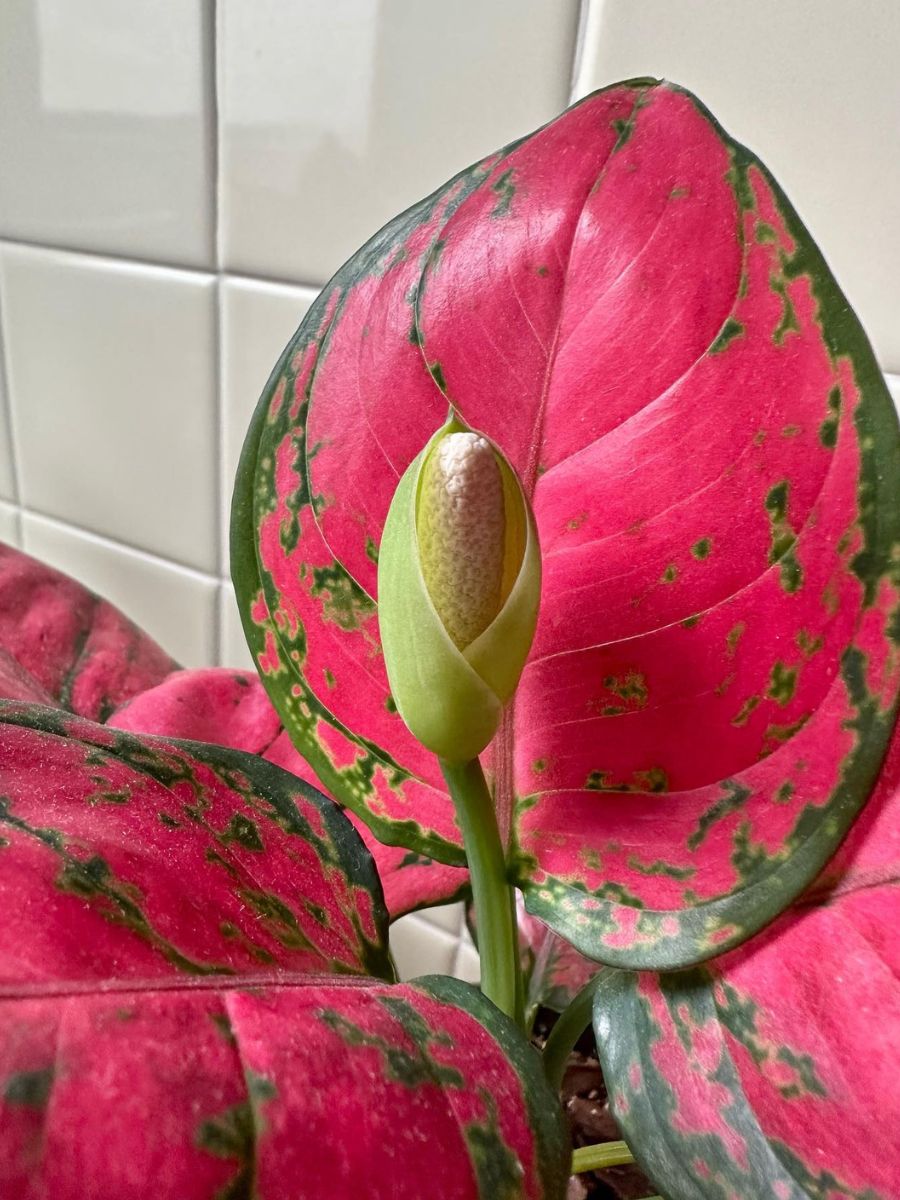
Temperature and Humidity
Maintaining your indoor temperatures to a range of 18° to 27° Celsius (65° to 80° Fahrenheit) is ideal for the health of the Chinese Evergreen plant. Aglaonema Chinese Evergreen prefers a humid environment; constantly misting should help regulate the humidity to optimal levels needed by your plant.
Fertilizer Application
Application of fertilizer should be done during the growing season with intervals of four to six weeks. The use of a well-balanced soluble fertilizer is highly recommended.
Avoid or reduce the application of fertilizer during the winter season, since there is less growth occurring during this period for your Chinese Evergreen plant.
Repotting
Repotting can be done once every two to three years, only during the growing season. Choose a slightly bigger and broader container for repotting and add a new and fresh potting mix.
Gently remove or detach the Chinese Evergreen plant from the older pot and transfer it to the new container. Give it a little yet sufficient watering to allow the plant to adjust to the new habitat, and do not resume watering until the topsoil dries out.

Common Pests Associated With the Chinese Evergreen
Chinese Evergreen is hardy and thus not susceptible to frequent infestation from pests and diseases. However, the following are some of the common pests associated with the Evergreen Chinese: spider mites, mealybugs, and aphids.
Constant scouting and inspection of your plant can aid in discovering any signs of infestation early and mitigating it before the damage becomes extreme. The use of neem oil and soapy water is both effective in getting rid of any pest infestation.
Propagating the Aglanoema Commutatum
The above growing and caring guidelines for the Chinese Evergreen will give you an amazing experience with your Aglanoema plant. You might want to multiply your current plant to have a couple of Chinese Evergreen plants to grow in different locations within your indoor space.
Propagating the Chinese Evergreen is super easy and does not require any expertise or knowledge, saving you the cost of having to purchase new and ready Chinese Evergreen plants.
Start the process by preparing the following tools: a well-sterilized cutting knife or secateurs, gloves, and small transparent glasses with rooting hormone mixed in them. Identify the stems with at least one or two nodes and carefully cut them out at a 45° angle. Place the cut stems into different glasses based on the number of plants you are aiming to propagate, and allow the rooting process to occur.
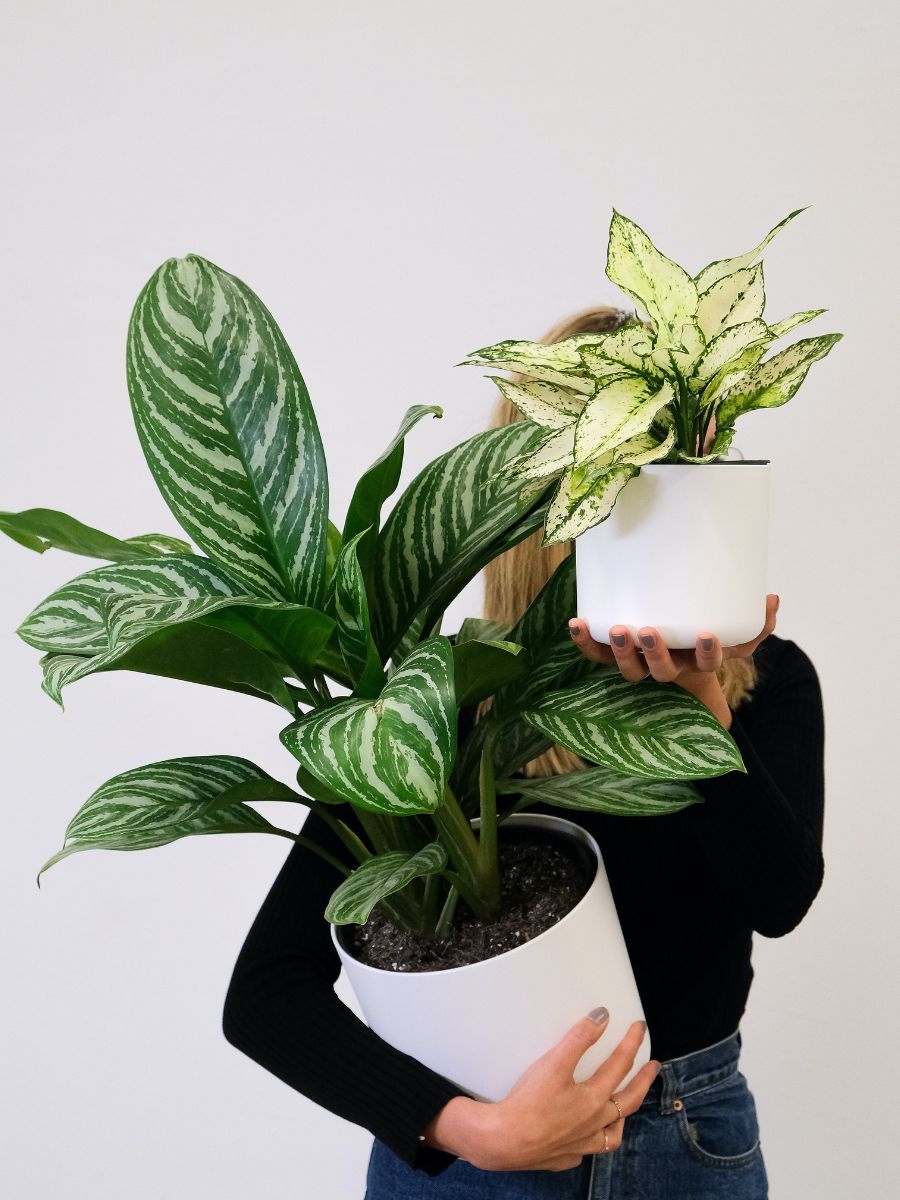
Once the roots have been formed properly, transfer the newly propagated plant into a small pot with a well-drained potting mix to begin its hardening process. The care for the propagated plant should follow the aforementioned growing and caring guide.
Chinese Evergreen Aglaonema is an elegant and luxurious addition to your indoor plant collection. Its variegated foliage, which comes in different colors, patterns, and shapes, can easily complement your interior design and theme preference. It is an easily-adapted indoor plant. With the right light access provision, watering, use of the correct potting mix, and temperature and humidity levels, you can easily grow your Chinese Evergreen to a staggering height of a meter and a width of 60 cm or more.
There you have it, a complete guide to growing and caring for Aglaonema the right way. Being cognizant of this, now it's time to get your Chinese Evergreen plant!


